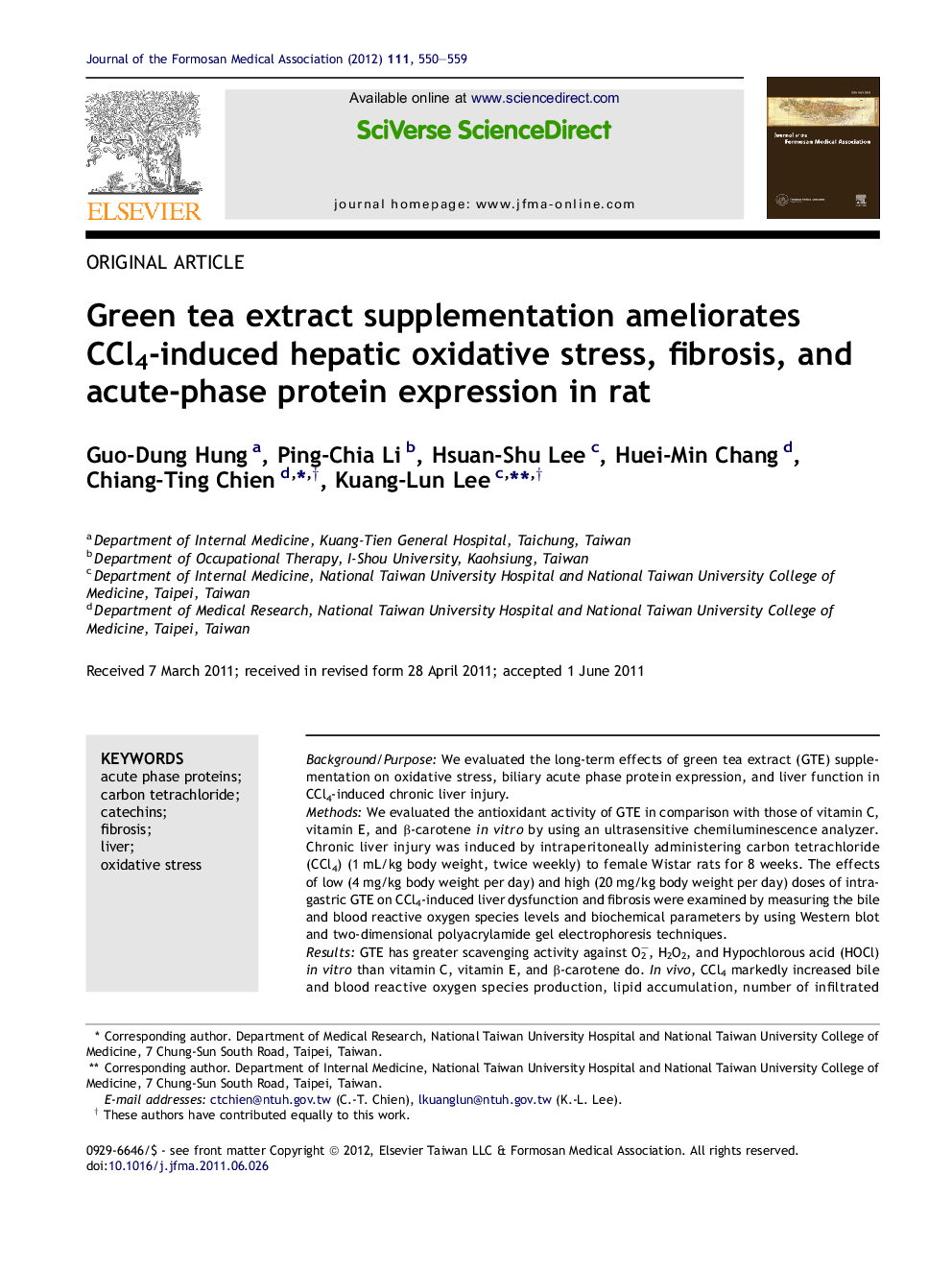| Article ID | Journal | Published Year | Pages | File Type |
|---|---|---|---|---|
| 3479171 | Journal of the Formosan Medical Association | 2012 | 10 Pages |
Background/PurposeWe evaluated the long-term effects of green tea extract (GTE) supplementation on oxidative stress, biliary acute phase protein expression, and liver function in CCl4-induced chronic liver injury.MethodsWe evaluated the antioxidant activity of GTE in comparison with those of vitamin C, vitamin E, and β-carotene in vitro by using an ultrasensitive chemiluminescence analyzer. Chronic liver injury was induced by intraperitoneally administering carbon tetrachloride (CCl4) (1 mL/kg body weight, twice weekly) to female Wistar rats for 8 weeks. The effects of low (4 mg/kg body weight per day) and high (20 mg/kg body weight per day) doses of intragastric GTE on CCl4-induced liver dysfunction and fibrosis were examined by measuring the bile and blood reactive oxygen species levels and biochemical parameters by using Western blot and two-dimensional polyacrylamide gel electrophoresis techniques.ResultsGTE has greater scavenging activity against O2–, H2O2, and Hypochlorous acid (HOCl) in vitro than vitamin C, vitamin E, and β-carotene do. In vivo, CCl4 markedly increased bile and blood reactive oxygen species production, lipid accumulation, number of infiltrated leukocytes, fibrosis, hepatic hydroxyproline content, and plasma alanine aminotransferase and aspartate aminotransferase activities, and reduced plasma albumin levels. Two-dimensional polyacrylamide gel electrophoresis revealed that CCl4 increased the acute-phase expression of six biliary proteins and decreased hepatic B-cell lymphoma 2 (Bcl-2), catalase, and CuZn superoxide dismutase protein expression. GTE supplementation attenuated CCl4-enhanced oxidative stress, levels of biochemical parameters, pathology, and acute-phase protein secretion, and preserved antioxidant/antiapoptotic protein expression.ConclusionGTE supplementation attenuates CCl4-induced hepatic oxidative stress, fibrosis, acute phase protein excretion, and hepatic dysfunction via the antioxidant and antiapoptotic defense mechanisms.
